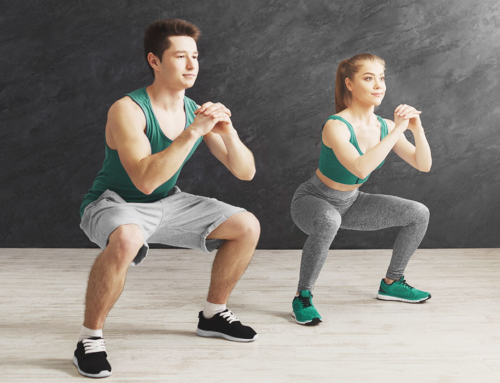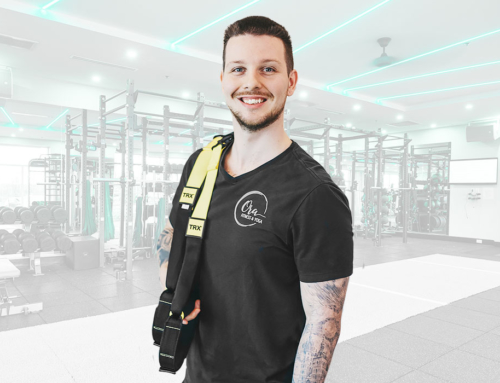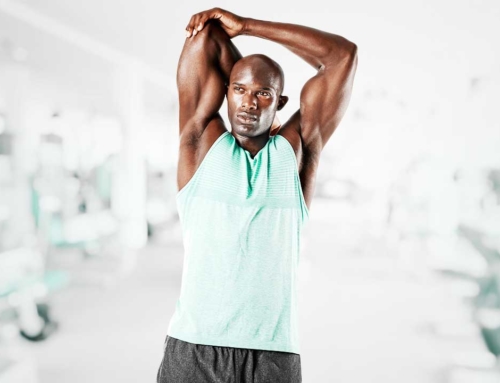The last four months I’ve spent my time in The Restore Rehab and Wellness clinic run by a fantastic chiropractor Dr. Sarah Forster. Her knowledge and understanding about the body and injury are beyond any other clinician I’ve worked with in the past, and I was lucky enough to collaborate and team up and create a rehabilitation service like no other.
As things started to shape up and our system we created was implemented, I began to see a common theme with patients. Many of them were dealing with shoulder pain. This theme made me think about our world today, and I’m going to guess that the leading issue of shoulder pain today is the combination of sitting all day with the addition of our smartphones and looking down for long periods of time.
The majority of us sit and now layer on top a device that we look at 90% of the day, and we wonder why our shoulders hurt. This situation is most likely a gradual thing, as it takes time for painful patterns to develop that cause us to go see someone. But, it is still an issue many people are dealing with right now.
Shoulder issues are individual, but there are some common traits that you can place into “buckets” as I call them to categorize them.
Standard Shoulder Problems
We have: “Frozen Shoulder,” Arthritis, and Rotator Cuff Tear.
Before I begin, I never tend to use the verbiage of “conditions” to patients as it could be more detrimental to their recovery. When a patient hears that they have a condition called “impingement” or “degenerative disc disease” they automatically feel defeated and weak. When I see a patient, I make it clear to them that their “shoulder needs to work” or “let’s stabilize that back” and here’s what we’re going to do to make it stronger. I also remind them that rehab is just like working out. When you show up consistently and have a goal of doing more volume either by more repetitions, another set, or more substantial weight to improve, rehab works the same. You perform your exercises pain-free, practice them, do them often, your pain will subside and get better.
Frozen Shoulder
Frozen Shoulder is something I see a lot with patients. I would say the majority of people out there have some sort of degree of Frozen Shoulder as if you look up the definition, you’d find something like this:
“Frozen shoulder occurs when it’s capsule thickens and tightens around the shoulder joint, restricting its movement.”
Doesn’t this sound like the majority of people who sit at a desk all day, then come to the gym and realize their shoulders hurt when they press overhead? I believe that your entire shoulder doesn’t need to be restricted entirely to be considered “frozen.” Any restriction to normal shoulder function is frozen shoulder in my mind, and we need to change that ASAP.
Frozen shoulder sounds worse than it is, and it can be easily fixed if the client or patient is determined to follow their rehabilitation protocol. The first step is consistent pain-free movement. Many times, a lot of people will use their bad shoulder in everyday activities and forget it’s limitations and perform a motion outside of their range of motion and might get a jolt of pain or straining sensation. What happens is with this information it’s fed back to the brain and nervous system, and the issue here is, your brain and the nervous system remembers EVERYTHING.
Now, when you go back to utilize your bad shoulder again in a similar motion, your nervous system will do everything in its power to protect you and stop you before the pain point like before. Remember, the nervous system in our body wants to keep us alive, so it will create safety barriers. Now that there is a feedback loop of protection, every time you use your lousy shoulder through a painful motion the range of motion will decrease, and voila, you got frozen shoulder.
As I said before, the first step is pain-free motion to communicate back with the nervous system that movement is safe and okay. Then, improve the quality of the shoulder joint itself and practice and hammer it out consistently for a long time. With individuals with frozen shoulder, I always fall back on Shoulder CARS (see a video of this exercise here).
Shoulder CARS is my go to as it teaches the patient their true pain-free range of motion of their shoulder joint. Coaching them on how to move pain-free, and figuring out where their limitations are is a powerful thing. 99.9% of the time the patient will have pain in their shoulder performing it the way I demonstrate it just like in the video, so I make sure to educate them that it DOESN’T need to look like the way I performed it.
The Shoulder CAR might look half the size demonstrated, or even just half of the rotation depending on the severity of the pain, but that’s okay, it’s pain-free. Remember, never go through pain!
Arthritis
The typical wear and tear of the shoulder joint itself, arthritis—and to be specific osteoarthritis—is a common condition many people and patients have. Mostly, the soft and smooth cushion of cartilage we have in our shoulder joint deteriorates, and we can hear grinding or clunking when performing movement.
As we age the chances of getting osteoarthritis goes up, and the most simple thing to do for preventative care is movement. I always tell patients and clients that movement is medicine, and we need to move our joints consistently. When we move our joints, especially with CARS, we are building a foundation by loading the shoulder capsule with a lot of great feedback and information, as well as improving the strength of the surrounding tissues.
Moving our joints on a daily basis with purpose will send plenty of nutrients and synovial fluid to keep the joint happy and healthy. When it comes to arthritis, this concept is key to fighting off painful patterns and movement.
Rotator Cuff Tear
Another situation of wear and tear, but too a point where there is a partial tear or full tear. I’d say the majority of people are dealing with a partial tear and tend to have a similar symptom where they can’t sleep on their side of their injured arm. I think the rotator cuff tear is probably the most annoying, stressful, and most energy-sucking injury for the shoulder to experience. It limits you entirely from everyday life, and you don’t know if your daily activities are causing more harm or are safe to do.
Depending on the severity of the tear, that will determine the approach I take with exercise. Remember, I’m working with a chiropractor that will make the call to what’s appropriate for exercise selection. An excellent place to start is shoulder isometrics. Yes, it may seem lame and not super sexy, but it’s a starting point, and most people don’t have pain while performing the exercise. See a video on this here.
My next approach is performing a single arm kettlebell farmer carry. If you notice in this video, I abduct my arm to about 20 degrees. At this degree of abduction, you get fantastic activation of your rotator cuff. Any time you grip a kettlebell, dumbbell, barbell, etc, as tight as possible, you end up sending a lot of great feedback to the shoulder.
You’re communicating with your shoulder that you’re about to pick up something substantial, so our shoulder goes “let’s position ourselves optimally to ensure no injury.”
Overall, I believe that many shoulder issues fall into three “buckets” as I mentioned above. Knowing that most people are dealing with these three, it becomes easier to help patients and clients overcome pain. With these three categories, using the three exercises above are my go-to’s for rehabilitation success.
Remember these exercises:
The last 2 exercises are some additional favourites of mine. Remember, shoulder pain is an individual approach. Sometimes my “buckets” don’t work at all, and you have to go back to the drawing board, and that’s fine. As long as you’re determined as a coach and patient, you will see success.









Leave A Comment